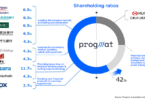Today Reuters reported that banks are in the process of investing $50 million in the institutional digital currency project previously called the “Utility Settlement Coin” (USC). UBS initiated the USC in conjunction with London developer Clearmatics, which is also a shareholder.
The most recent figure for the number of USC bank members was 17 with the last publicly announced list of participants as Barclays, BNY Mellon, Canadian Imperial Bank of Commerce, Credit Suisse, Deutsche Bank, HSBC, ICAP, MUFG, NEX, Santander, State Street and founder UBS.
CLS the systemically important foreign exchange clearinghouse is rumored to be a member. Earlier this year Ledger Insights was told a USC launch is expected in 2020.
The purpose of the project is to create a digital currency which banks can use for settlement, for example, in the derivatives markets. A distinguishing feature is that cash collateral backing the currencies will be deposited at central banks.
This will enable almost instant finality or Delivery versus Payment without the need for an intermediary (a central counterparty or clearing house) to absorb counterparty risks as a result of payment settlement delays. Hence the name of the new entity is FNALITY. We can confirm that two English companies were incorporated on April 18th (FNALITY International and FNALITY IP) but currently they are still shells.
While Delivery versus Payment offers greater efficiencies for banks, there is also a potential social good. Central counterparties act as a buffer for defaults by one of the trading parties. In crisis times, they need sufficient capital to absorb losses to maintain financial stability. But that costs money so there are concerns about adequate capitalization. The BIS recently published a report on central counterparty capitalization and the challenge of misaligned incentives.
One slight fly in the ointment is that some parties have not been particularly enthusiastic about Delivery versus Payment (DvP). The issue is that most settlement systems are designed to minimize cash flows and involve netting. Simplistically, if a bank does $1 billion in purchases at the start of the day and $500 million in sales later on, with netting systems, they only have to produce $500 million at the end of the day. With DvP, at the point of the purchase trade, they have to produce $1 billion.
This was highlighted in a report by the DTCC (which has a vested interest in the status quo) but has also surfaced with the Australian Securities Exchange’s new blockchain CHESS settlement system. Additionally, Accenture raised the issue when testing Central Bank Digital Currencies for Canada’s Project Jasper.
So it could take a little time for alternative optimization systems to be developed. Or the USC group may have their own solution.
Clearmatics has developed the USC platform based on ethereum. It’s also been working on an open source interoperability solution called ION. Interoperability is vital because the USC will be used to settle transactions on a variety of blockchain platforms. For example, a bond issuance developed on the Corda network might use USC for payment, but USC exists on its own separate network. This necessitates an “atomic swap” between the two networks.
Update: Two weeks after this article, Fnality confirmed it had raised £50 million (not dollars) and revealed its list of investors which now includes Nasdaq.






